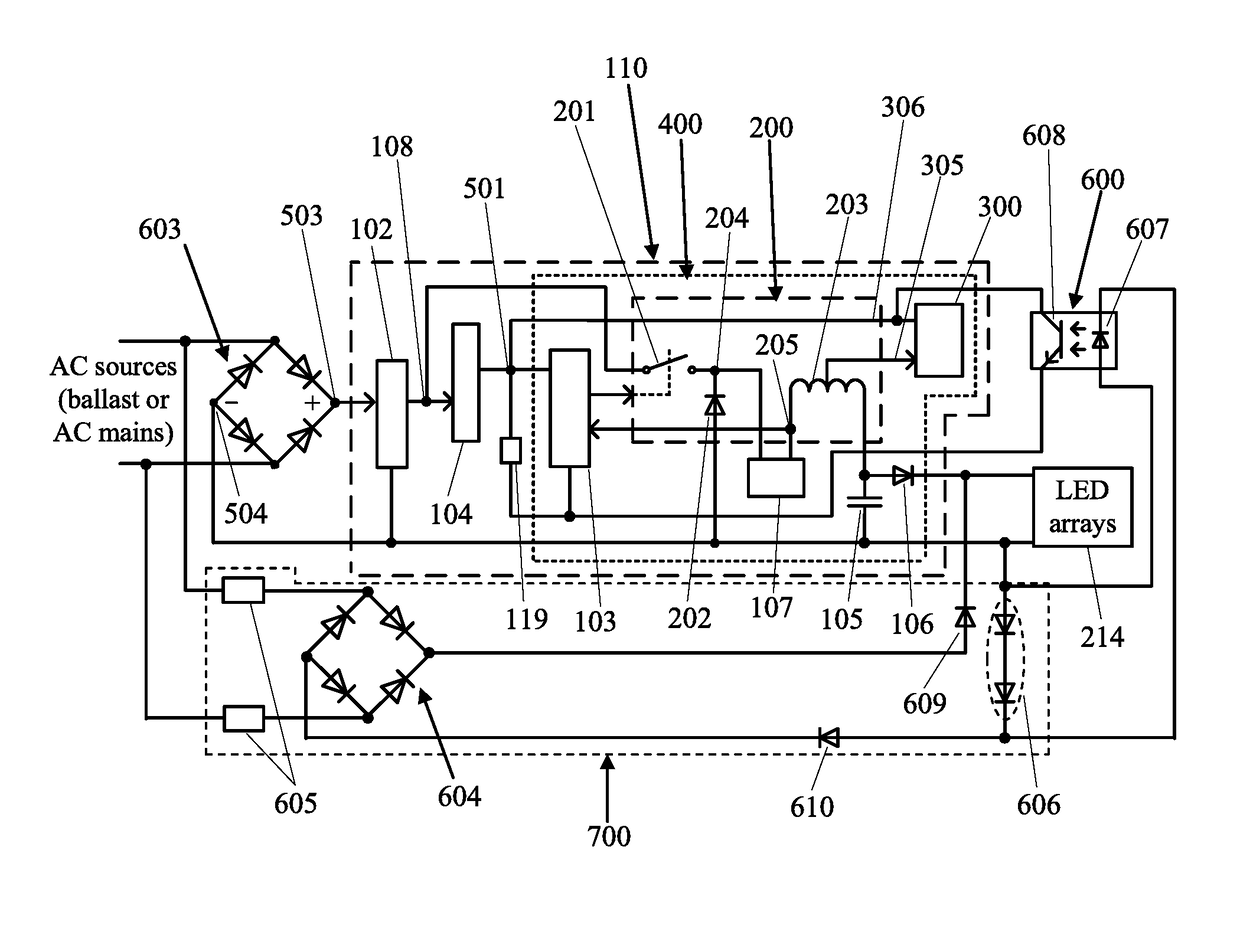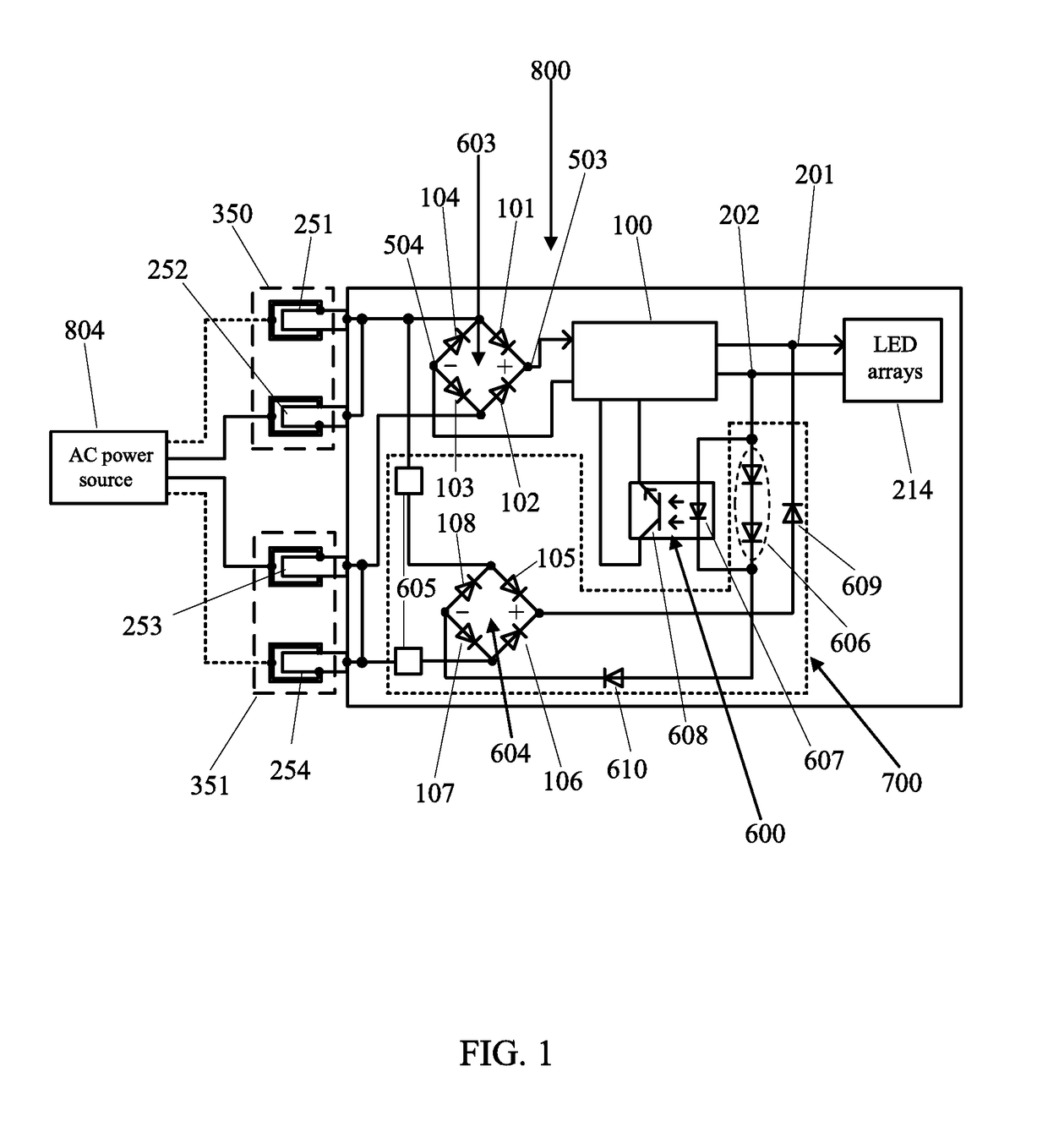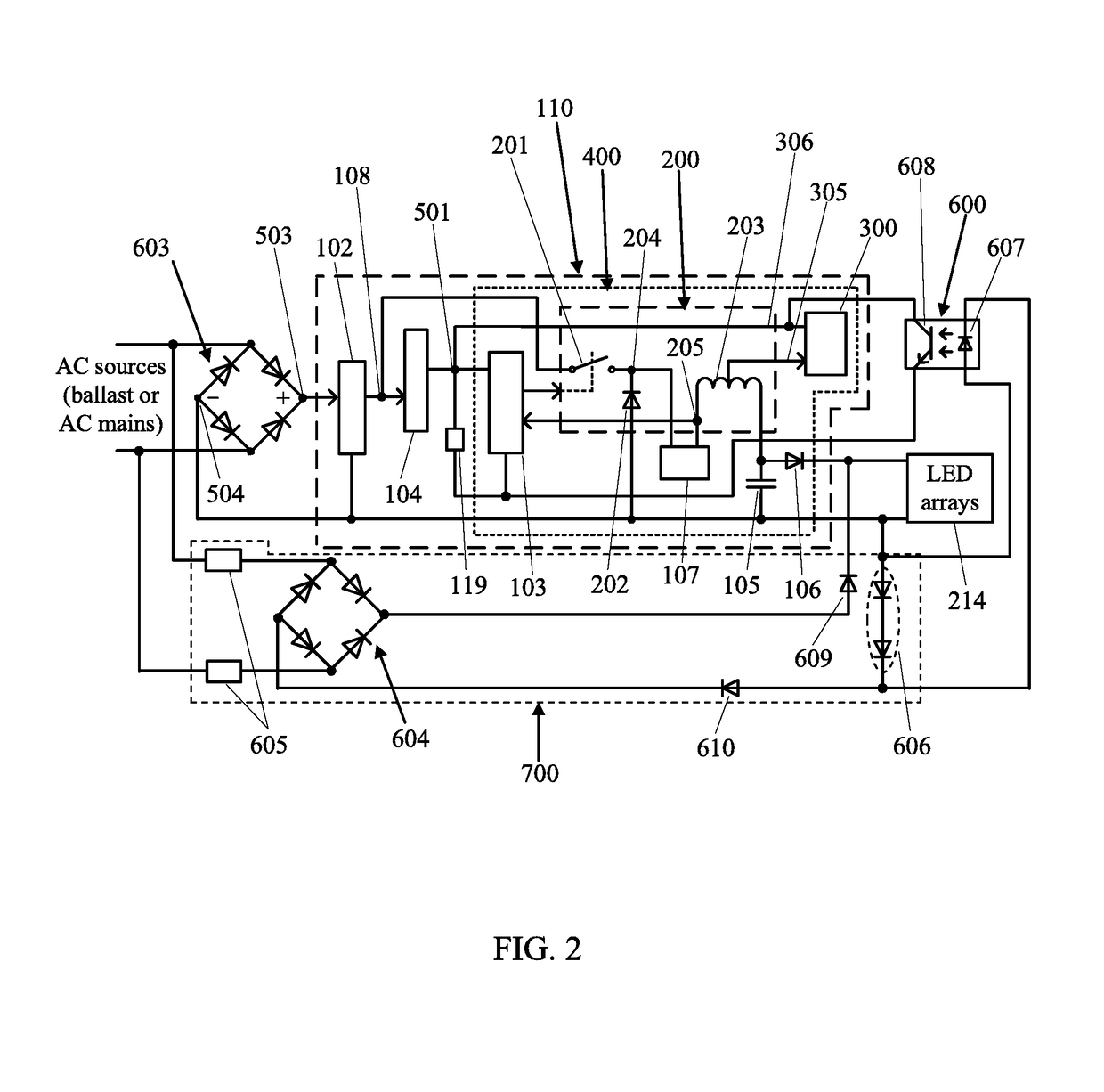Solid-state lighting with auto-select settings for line voltage and ballast voltage
a solid-state lighting and auto-selecting technology, applied in the field of led lamps, can solve the problems of high total cost of ownership, incompatibility between identifying ballasts and replacing, and high cost of replacement of ballasts, so as to reduce the risk of lamp damage, without ambiguity and risk of internal fir
- Summary
- Abstract
- Description
- Claims
- Application Information
AI Technical Summary
Benefits of technology
Problems solved by technology
Method used
Image
Examples
Embodiment Construction
[0018]FIG. 1 is a block diagram of an LED lamp 800 operable with AC power sources that include AC mains and ballasts according to the present disclosure. The LED lamp 800 comprises one or more LED arrays 214; a lamp base portion comprising electrical conductors 251, 252, 253, and 254; a first full-wave rectifier 603; an optocoupler 600; a ballast operation circuit 700; and an LED driving circuit 100. The ballast operation circuit 700 comprises and a second full-wave rectifier 604, two frequency sensitive devices 605, and two or more diodes 606 connected in series. The first full-wave rectifier 603 receives power from an AC power source 804 via the four electrical conductors 251, 252, 253, and 254 and converts an AC voltage into a first DC voltage. The AC power source 804 may be a ballast or the AC mains. The electrical conductors 251 and 252 connect to a fixture socket 350, and the electrical conductors 253 and 254 connect to the other fixture socket 351. The LED driving circuit 100...
PUM
 Login to View More
Login to View More Abstract
Description
Claims
Application Information
 Login to View More
Login to View More - R&D
- Intellectual Property
- Life Sciences
- Materials
- Tech Scout
- Unparalleled Data Quality
- Higher Quality Content
- 60% Fewer Hallucinations
Browse by: Latest US Patents, China's latest patents, Technical Efficacy Thesaurus, Application Domain, Technology Topic, Popular Technical Reports.
© 2025 PatSnap. All rights reserved.Legal|Privacy policy|Modern Slavery Act Transparency Statement|Sitemap|About US| Contact US: help@patsnap.com



